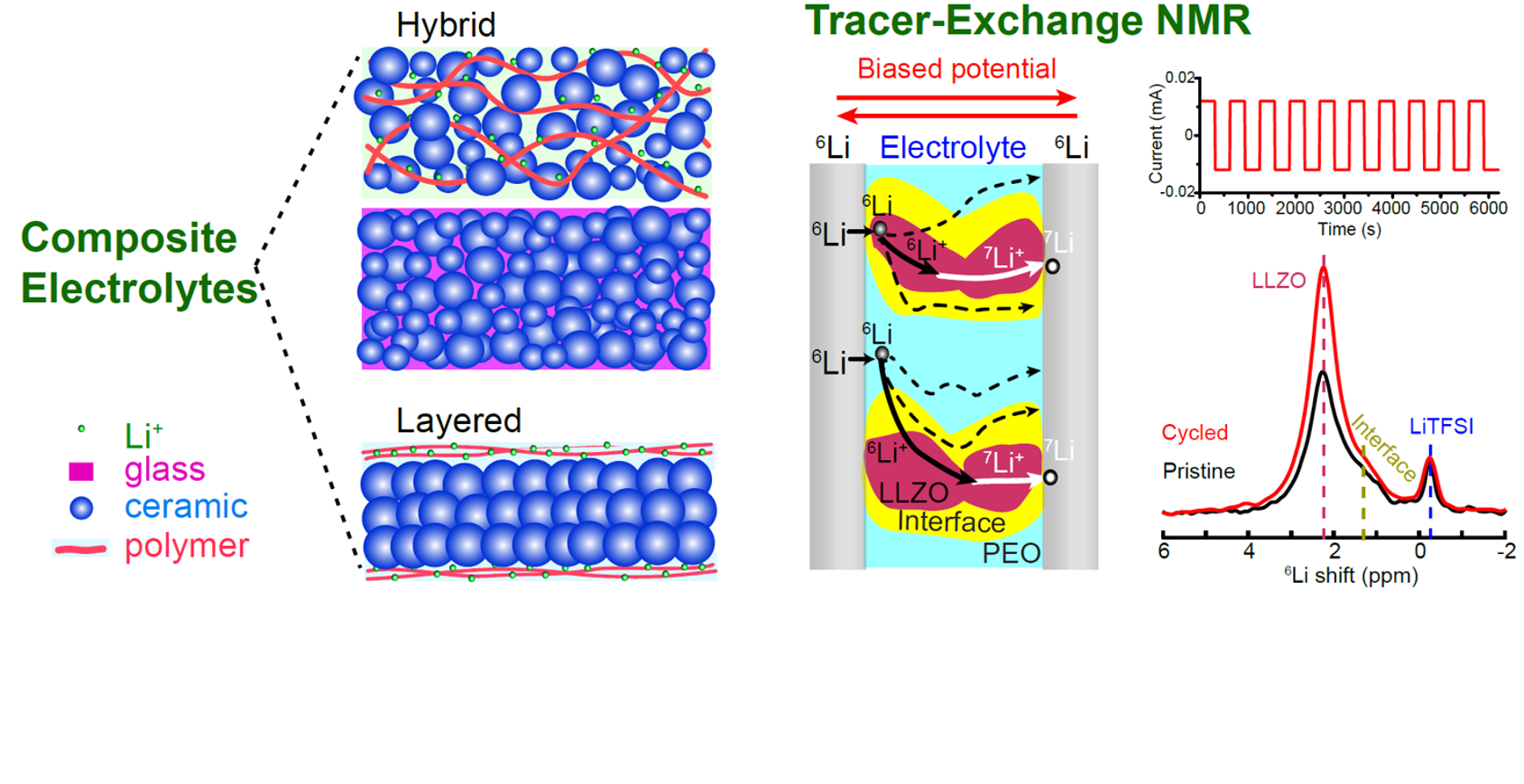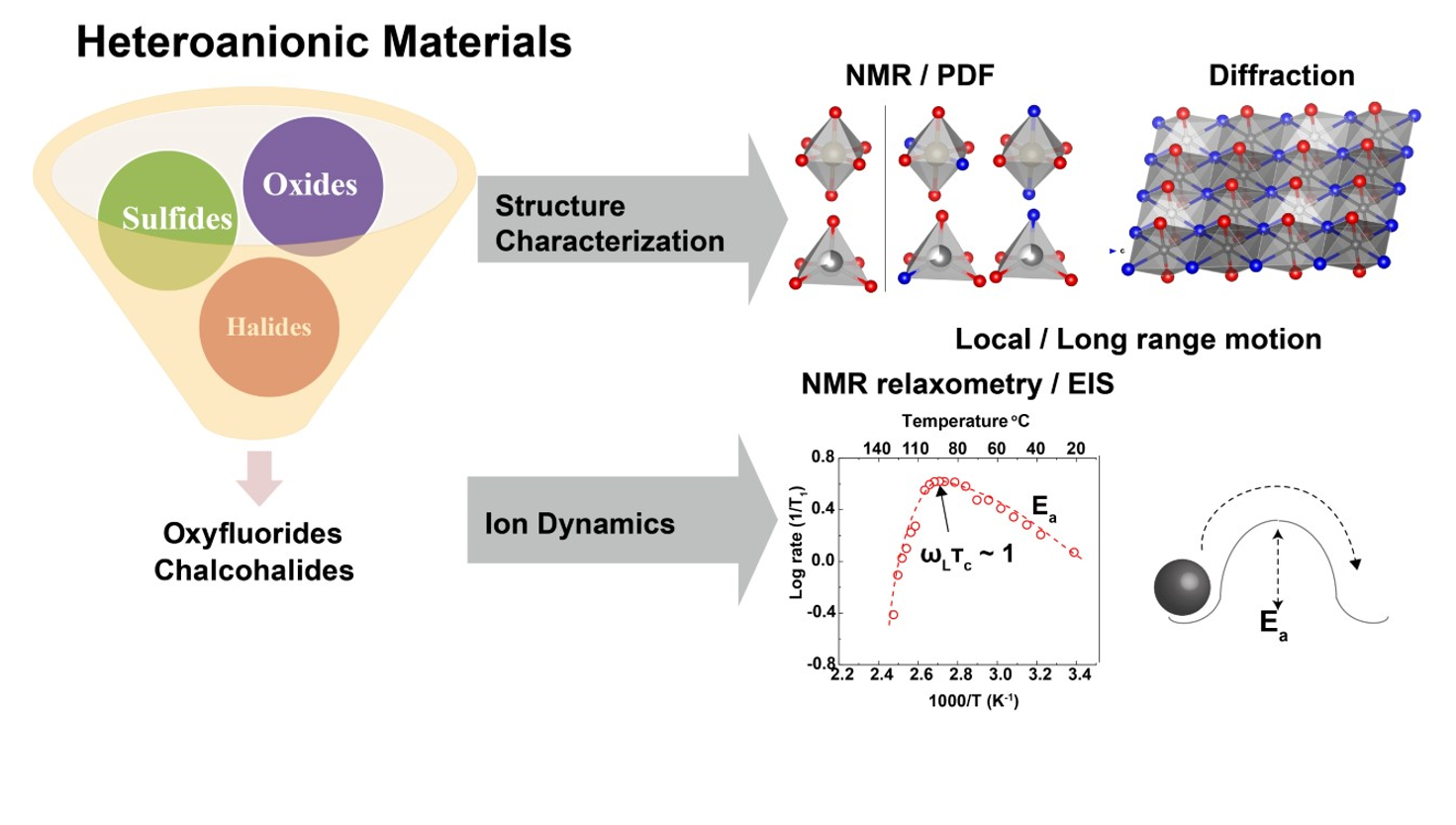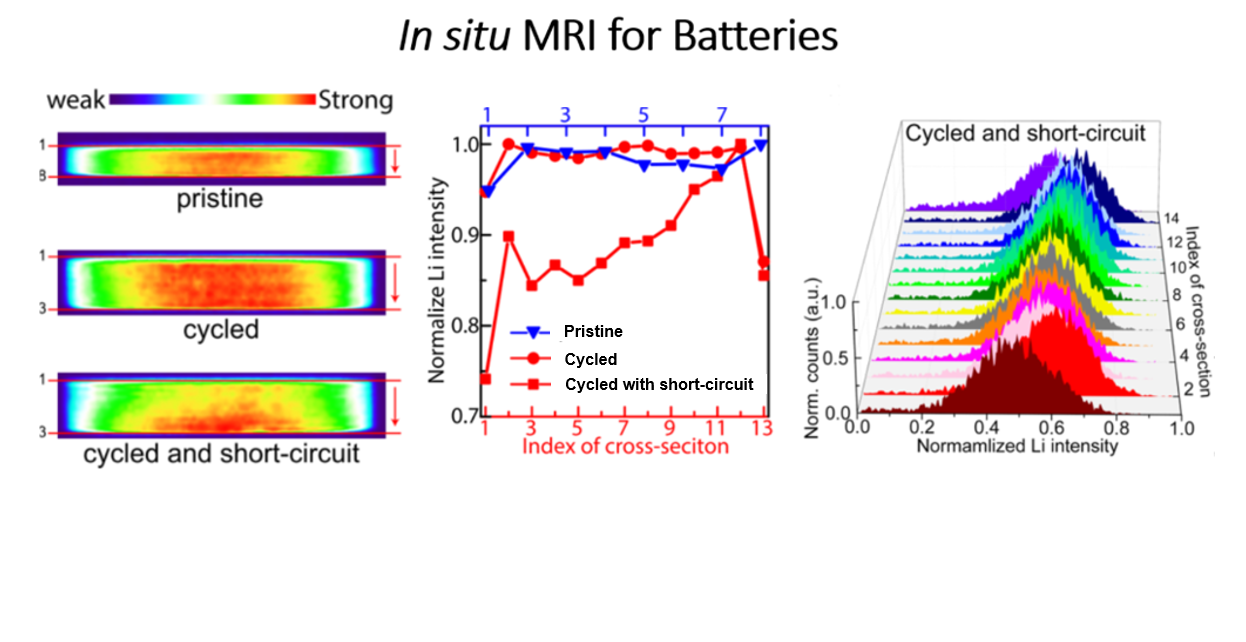![]()
Research Interests
Our research efforts focus on developing and improving solid-state nuclear magnetic resonance (NMR) techniques to achieve enhanced detection sensitivity, improved spectral resolution, and operando characterizations. We also leverage advanced ex situ and in situ multinuclear solid-state NMR methods and the state-of-the-art facility at the National High Magnetic Field Lab (NHMFL or MagLab) for investigating structure-property correlations and elucidating reaction mechanisms (In fact, almost 50% of our research efforts are performed at the MagLab! Here is a brief introduction about what we do overthere: The Scientist & the Sample ). We aim to gain a fundamental understanding of interfacial processes that have important scientific and technological implications. Foundational knowledge gained from our research will have significant impact on developing advanced electrochemical energy conversion and storage systems, efficient heterogeneous catalysis, and compatible interfaces in composite materials.














